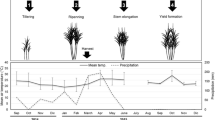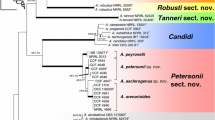The distribution pattern and frequency of isolates of a snow mold fungus, Typhula ishikariensis biotype A belonging to a predominant MCG (mycelial compatibility group, referred to as super MCG), were surveyed throughout its habitat from northern Honshu to eastern Hokkaido. About 38 and 14% of isolates examined belonged to super MCG in eastern and central Hokkaido, respectively ; however, super MCG was never found in southern Hokkaido or northern Honshu. These findings imply that T. ishikariensis biotype A consists of two populations in Japan, i.e., one that is distributed in Honshu and southern Hokkaido and lacks super MCG isolates, and the other that includes super MCG isolates and exists in central and eastern Hokkaido. The difference in distribution pattern of the two populations is discussed in terms of geological history during the Pleistocene (2 million to 10 thousand years ago). The tendency of global warming, which alleviates freezing damage, was considered to be responsible for the outbreak of this fungus in eastern Hokkaido.
Similar content being viewed by others
Author information
Authors and Affiliations
Additional information
Received 6 December 1999/ Accepted in revised form 9 December 1999
Rights and permissions
About this article
Cite this article
MATSUMOTO, N., KAWAKAMI, A. & IZUTSU, S. Distribution of Typhula ishikariensis Biotype A Isolates Belonging to a Predominant Mycelial Compatibility Group. J Gen Plant Pathol 66, 103–108 (2000). https://doi.org/10.1007/PL00012929
Issue Date:
DOI: https://doi.org/10.1007/PL00012929




